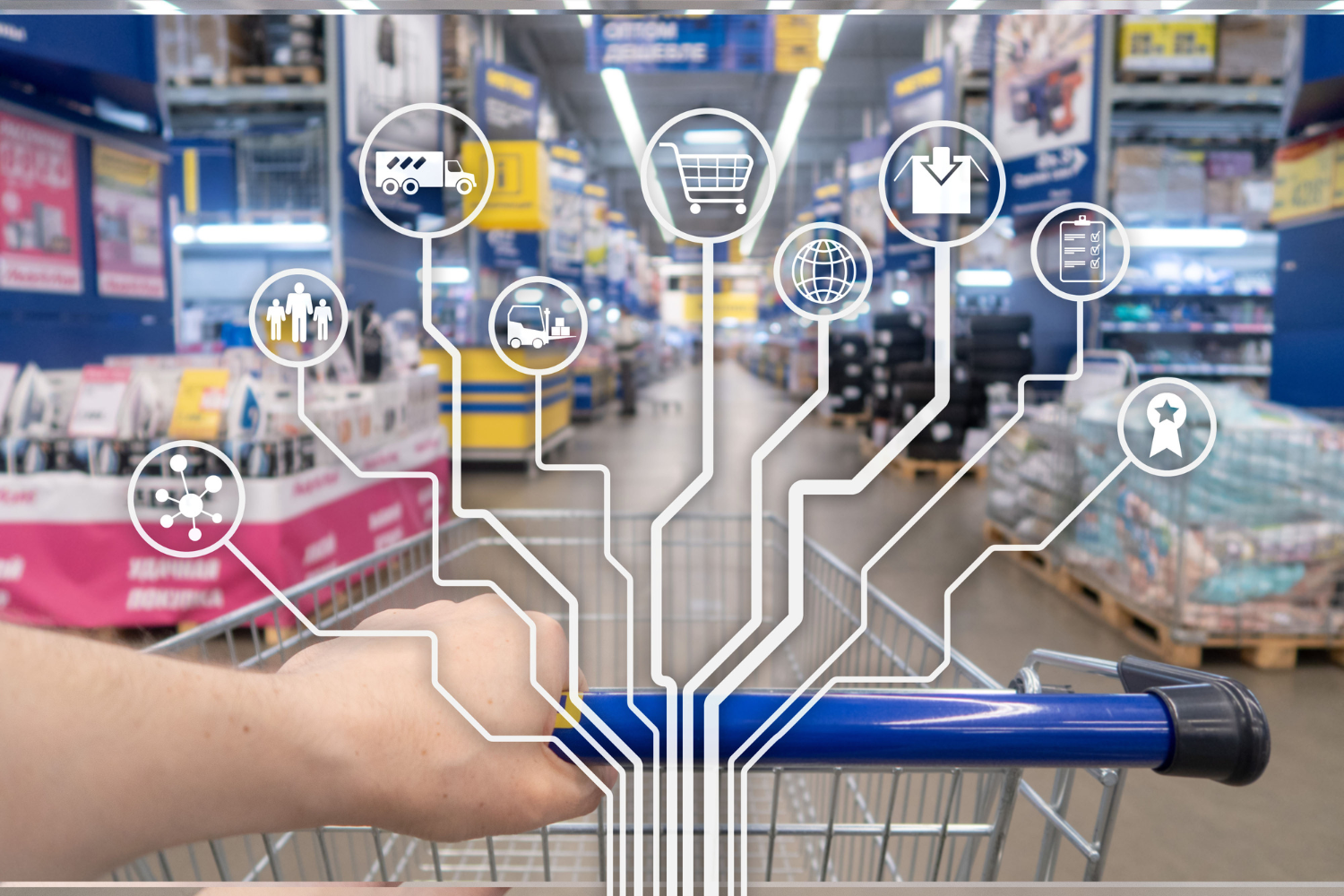New technology is constantly reshaping the marketing landscape. From social media to mobile technology, marketing has been transformed time and time again by innovative new tools and processes. With the rise of the Internet of Things (IoT), marketers are once again faced with new challenges and opportunities.
The Internet of Things is the network of devices connected to the internet which can gather data and send it to other devices or users. Devices connected to the IoT include sensors, smartphones, tablets, wearables, smart speakers, smart home appliances and connected cars.
From smart factories to smart homes, businesses are adopting IoT solutions to streamline operations and gain a competitive edge. In 2021, there were more than 10 billion IoT devices connected worldwide and it is estimated that by 2030, that number will exceed 25.4 billion. In addition, the consumer IoT market is projected to reach $142 billion by 2026 at a CAGR of 17%.
The adoption of IoT technologies has had a profound impact on marketing in a number of ways. Considering the projected growth as mentioned above, it may be fair to say that marketing will never be the same again. This article will serve as an overview of the ways in which IoT technology is being integrated into marketing strategies.
Applications of IoT in Marketing
Big Data and Analytics
While data collection has always been crucial for marketing, IoT-enabled devices have opened up a whole new level of insight and measurement. The ever-growing network of devices enables businesses to gather unprecedented volumes of customer data that can be used to create targeted and personalised marketing messaging that is more relevant to customer needs.
For example, a company can use wearable technologies to understand variables such as frequency of use and length of sessions. In the past, there was no way for businesses to know the intricacies of how consumers were using some physical products but now, due to connectivity, comprehensive data about the customer’s usage habits will be available. In addition, using IoT-enabled devices to gather customer data can help businesses improve the customer experience by allowing them to detect and fix problems before they become major issues.
Real-Time Marketing
Real-time marketing relies on the ability to react quickly to changes in data. IoT provides a wealth of data that can be analysed in real time, enabling marketers to respond quickly to events, news, and trending topics. It allows marketers to create timely offers, recommendations, and calls to action, enabling them to attract customers, engage with them, and convert them into loyal brand advocates.
Real-time marketing is in use with devices such as Google Home or Amazon’s Alexa. For example, if a customer has run out of detergent and needs some within a couple of days, Alexa may order it and store the information; thanks to predictive analytics, it may anticipate when they will need to purchase it again. Around the projected buying time, marketers can offer deals and recommendations for another purchase.
Geofencing is another method involved in real-time marketing. It uses a device’s GPS data to map potential customers to nearby businesses. Customers then receive notifications with promotions and so on. Thanks to intent-based advertising (where customers’ online behaviour is analysed in order to predict their intentions), geofencing can be used to ensure the most receptive customers are targeted.
IoT in Advertising
A great example of the us of IoT in advertising is Nivea’s IoT print ad in Rio de Janeiro. On launching a new sunscreen product for children, the company printed an ad containing a GPS-enabled bracelet. When on the beach, children could wear the bracelet and their caregivers would be notified if the child moved beyond a safe distance. This innovative example shows how the brand demonstrated care for their customers as well as improving the experience of using their sunscreen products.
Another example of IoT in advertising is using sensors to monitor foot traffic in venues and adjust the placement of in real-time in order to maximise their exposure.
Weather data allows for enhanced contextual advertising; based on a device’s location data, current conditions and forecasts can be taken into account in order to display ads that are extremely relevant to the customer’s circumstances. This can also be combined with geofencing in order to promote specific businesses.
Customer Experience
There are many ways that IoT can improve the customer experience. For example, hotels are now using smart room technology; the guest’s smartphone becomes a remote control for lighting, heating, and any other IoT-enabled appliances in the room.
IoT has various applications in retail, such as smart shelves which display relevant and personalised information to the customer about the products they are browsing.
Aside from the direct benefits customers derive from initiatives such as Nivea’s print ad as well as the above, any operational improvements will ultimately benefit the customer, and IoT allows for many such improvements.
For example, in retail, IoT is also used to monitor foot traffic in order to optimise staffing levels and allocation. In manufacturing, improved processes and self-repairing machines help to ensure minimal downtime; by identifying and correcting issues early, they can be repaired before operations are halted. As a result, products are available promptly.
The Challenges of IoT
IoT technology raises a lot of concerns about privacy. With so many devices now collecting data, it’s possible to build a very detailed profile of a person’s life, including their movements, habits, and even their health markers. This data could be used for nefarious purposes such as stalking, manipulation, or identity theft. Additionally, many IoT devices are insecure and can easily be hacked, meaning that personal data could be accessed by unauthorised individuals. In 2021 alone, there were more than 1 billion attacks on IoT-enabled devices.
Wearable fitness devices and other medical applications of the IoT are also cause for concern, such as the hacking of IoT-enabled pacemakers or insulin pumps which could cause fatalities. These devices have been recalled in the past due to security threats including the placement of malware directly onto pacemakers.
There are also concerns over the sustainability of IoT. It is projected that in 2025, IoT devices will generate 73.1 zettabytes (equal to one billion terabytes). Data centres consume huge amounts of energy; aside from operating the servers, cooling equipment is required due to the amount of heat they generate, adding to the energy demands. However, only 28% of IT decision makers consider environmental issues when selecting data centre technology.
On the other hand, there are various applications where IoT can be used to conserve energy. The responsibility lies with businesses to ensure they make ethical choices and support green data centres, and to make such decisions known to customers.
Integrating IoT Technology
Businesses whose products themselves are not compatible with sensor technology (such as food and beverage companies) can begin adopting geofencing and other advertising techniques that make use of the Internet of Things to attract customers to their establishments. Using sensor technology for monitoring customer behaviour on the premises (such as monitoring foot traffic to optimise ad placement) is another way to leverage the opportunity.
Companies whose products can be fitted with sensors and are yet to implement IoT can start by gaining clarity on customer needs based on the existing data. There is no point in introducing such devices without truly understanding the value customers will gain, so it is advisable to start using this technology to solve existing problems.
Where relevant, companies may gradually introduce sensor-embedded versions of their existing products. Starting gradually can help to test the waters and gather new data that will allow for the best informed decisions. Forming partnerships with relevant manufacturers (such as a partnership between clothing companies and wearables manufacturers) is a crucial step for the long-term integration of IoT.
Voice search is another technology that is gaining traction alongside IoT due to the devices such as Alexa that function based on voice command; therefore, implementing voice search functionality on any digital channels is another good starting point.
Security must be top priority when implementing any new technology, especially IoT. Keep on top of developments in cybersecurity regarding IoT-enabled devices and ensure that all relevant personnel are thoroughly trained so that they understand all the possible threats and the best current methods for mitigating against them.
In Summary
The Internet of Things is disrupting industries, economies, and marketing strategies. It’s creating new ways of working and new ways of engaging with customers. With IoT, marketers have access to more data and insights than ever, enabling them to make well-informed strategic business decisions, create personalised experiences, build brand loyalty, and engage with customers at the optimal moment.
While there are drawbacks in terms of security and sustainability, there are solutions (which mainly relate to ensuring the relevant personnel are making the correct decisions). As far as consumer privacy is concerned, the demand for IoT solutions is high regardless. Businesses can begin integrating this technology through harnessing the potential of their existing products, making data-driven decisions to inform strategy.
To discover how we’re helping businesses worldwide develop leading marketing strategies, contact us – we would be delighted to assist.


